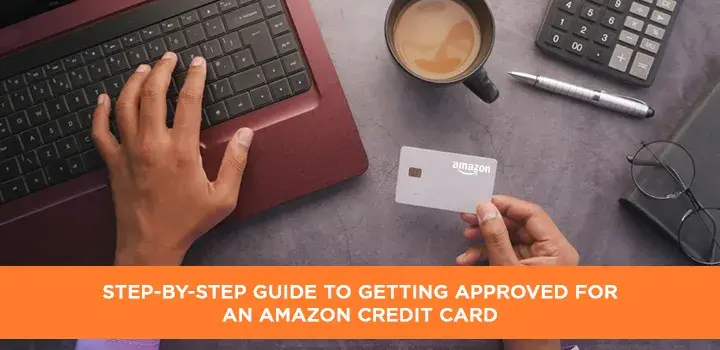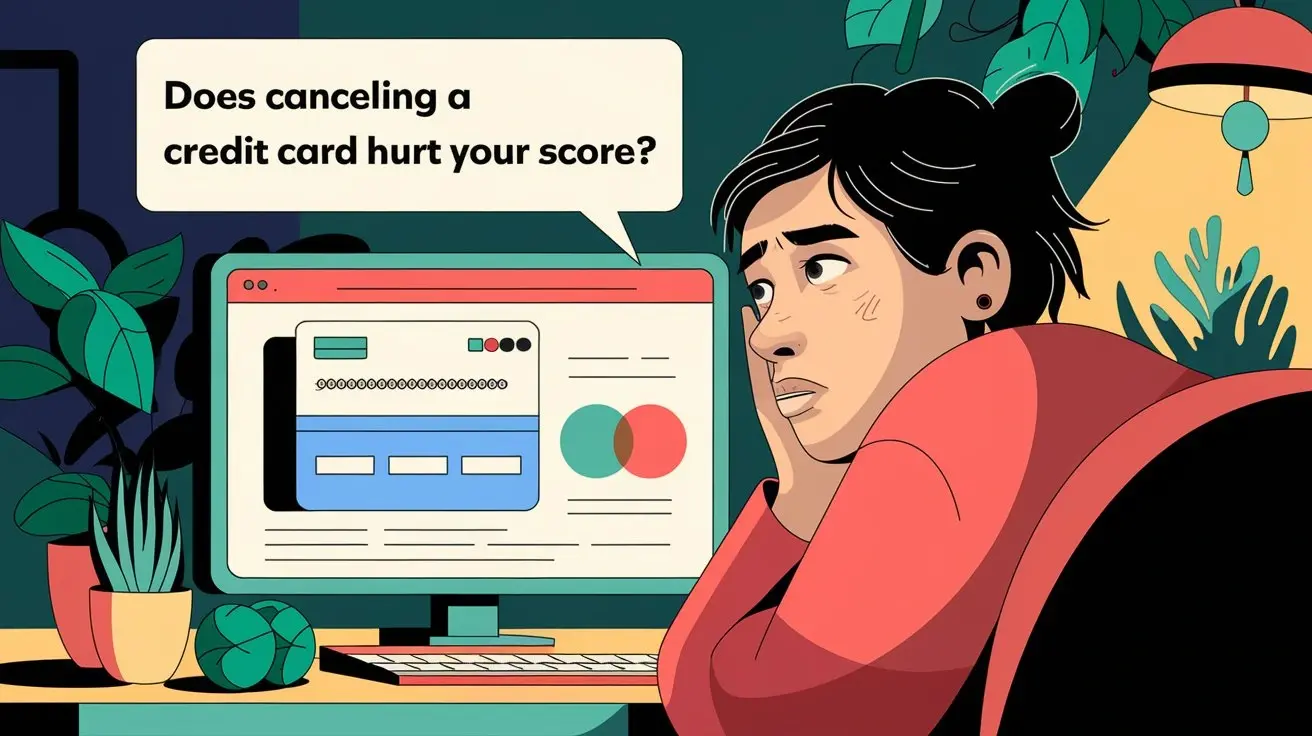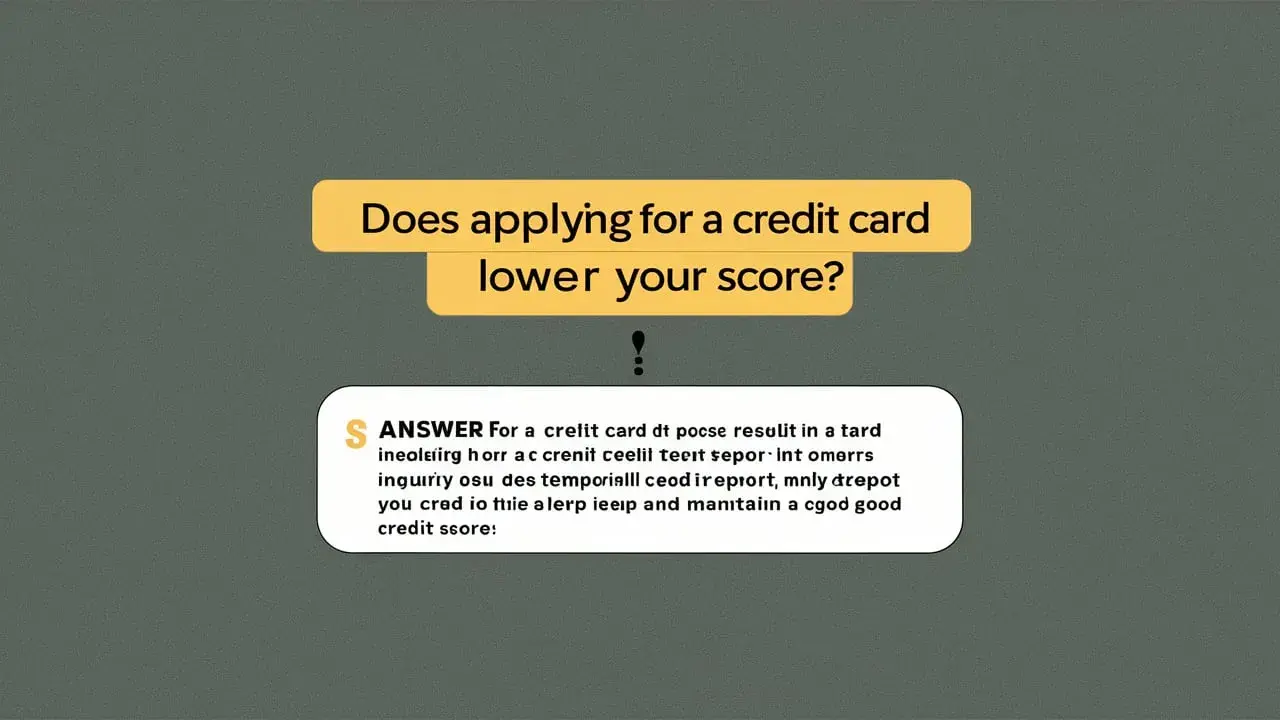-
Posted on: 21 Dec 2022

-
Dreaming of effortless Amazon shopping and exclusive rewards? This comprehensive, step-by-step guide will demystify the process of getting approved for an Amazon credit card. We'll cover everything from eligibility requirements to application strategies, ensuring you have the knowledge to maximize your chances of approval in 2025.
Understanding Amazon Credit Cards
Amazon credit cards are designed to enhance the shopping experience for frequent Amazon customers. Issued by Synchrony Bank, these cards offer a range of benefits, primarily focused on rewards earned on Amazon purchases and at Whole Foods Market. In 2025, these cards continue to be a popular choice for consumers looking to save money and earn valuable rewards. Understanding the nuances of these cards, including their reward structures, annual fees (or lack thereof), and associated benefits, is the first crucial step towards successful application and utilization.
The core appeal of Amazon credit cards lies in their ability to turn everyday spending into tangible savings. Whether it's earning accelerated cash back on Amazon.com purchases, enjoying special financing offers, or benefiting from purchase protection, these cards offer a compelling value proposition. However, like any credit product, approval is not guaranteed. A thorough understanding of what lenders look for and how to present your financial profile effectively is paramount.
Why Choose an Amazon Credit Card?
The primary motivation for many applicants is the attractive rewards program. In 2025, the most popular Amazon cards typically offer:
- Accelerated Rewards: Earn a higher percentage of cash back or points on purchases made directly through Amazon.com. This can range from 3% to 5% or even more, depending on the specific card and any promotional offers.
- Whole Foods Market Benefits: For those who shop at Whole Foods, certain Amazon cards provide similar accelerated rewards on groceries purchased there, making them a dual-purpose card for online and in-store shopping.
- Welcome Bonuses: New cardholders often receive a welcome bonus, which can be in the form of statement credits or bonus points, further incentivizing application.
- No Annual Fee: Many of the most popular Amazon credit cards come with no annual fee, making them a cost-effective option for ongoing use.
- Special Financing Offers: Some cards may offer 0% introductory APR on purchases or specific Amazon devices for a limited period, allowing for interest-free payments on larger items.
Beyond the rewards, these cards can also offer purchase protection, extended warranty benefits, and access to exclusive deals. These added perks contribute to the overall value proposition, making them a well-rounded financial tool for Amazon enthusiasts.
The Role of Synchrony Bank
It's important to note that Amazon credit cards are issued by Synchrony Bank. This means that Synchrony Bank is the entity that reviews your application, makes the approval decision, and manages your account. Therefore, understanding Synchrony's lending criteria is key. They assess creditworthiness based on factors like credit score, income, and debt-to-income ratio, similar to other major credit card issuers.
Eligibility Criteria: What You Need
Before you even begin the application process, it's essential to understand the baseline eligibility requirements. Meeting these criteria significantly increases your chances of approval. In 2025, these generally remain consistent with previous years, focusing on your financial health and credit history.
Credit Score Requirements
This is arguably the most critical factor. While Amazon and Synchrony Bank do not publicly disclose exact credit score cutoffs, general industry knowledge and applicant experiences suggest the following:
- Excellent Credit (740+): Applicants with excellent credit scores are most likely to be approved for the premium Amazon Rewards Visa Signature Card. This score indicates a strong history of responsible credit management.
- Good Credit (670-739): A good credit score generally makes you eligible for most Amazon credit cards, including the standard Amazon Prime Rewards Visa Card. This range signifies a reliable borrower.
- Fair Credit (580-669): Approval for Amazon cards with fair credit is less common but not impossible. You might be considered for cards with lower credit limits or potentially a secured version if available. However, the standard Amazon cards are typically geared towards those with better credit.
- Poor Credit (<580): It is highly unlikely to be approved for an Amazon credit card with poor credit. In such cases, focusing on rebuilding credit with secured credit cards or credit-builder loans is the recommended first step.
It's crucial to check your credit score before applying. Many financial institutions and credit monitoring services offer free credit score checks. Understanding where you stand allows you to set realistic expectations and avoid unnecessary application rejections, which can negatively impact your score.
Income and Employment Stability
Lenders need assurance that you have the capacity to repay the credit extended to you. Therefore, you'll need to provide information about your income:
- Sufficient Income: You must demonstrate an income level that supports your ability to make monthly payments. This includes your salary, wages, and any other verifiable income sources.
- Employment Stability: While not always a strict requirement, a stable employment history can be viewed favorably. Lenders prefer to see a consistent work record, as it suggests ongoing income.
- No Minimum Income Stated: Synchrony Bank, like most issuers, does not publicly state a minimum income requirement. However, your income relative to your existing debt is a key consideration.
Be prepared to state your annual income accurately on the application. Lenders may verify this information, especially if your stated income seems unusually high or low compared to your credit profile.
Debt-to-Income Ratio (DTI)
Your DTI ratio is a measure of your monthly debt payments compared to your gross monthly income. A lower DTI indicates you have more disposable income available to handle new debt. While not explicitly asked for, lenders calculate this internally.
- Calculation: DTI = (Total Monthly Debt Payments / Gross Monthly Income) x 100
- Ideal Range: Generally, a DTI below 36% is considered good, and below 43% is the upper limit for many lenders. A lower DTI strengthens your application.
Reducing existing debt before applying can significantly improve your DTI and, consequently, your approval odds.
Other Considerations
- Age: You must be at least 18 years old to apply for a credit card in the United States.
- U.S. Residency: Applicants typically need to be a U.S. citizen or permanent resident.
- Social Security Number (SSN): A valid SSN is required for credit applications in the U.S.
Failing to meet these fundamental requirements will almost certainly lead to denial, regardless of your credit score.
Types of Amazon Credit Cards
Amazon offers a few primary credit card options, each with slightly different benefits and target audiences. Understanding these distinctions is crucial for selecting the card that best aligns with your spending habits and financial goals.
Amazon Prime Rewards Visa Signature Card
This is the flagship card for Amazon Prime members. It offers:
- Rewards: 5% back at Amazon.com and Whole Foods Market when you use your card with an eligible Prime membership.
- Other Purchases: 2% back at restaurants, gas stations, and drugstores.
- General Purchases: 1% back on all other purchases.
- Welcome Offer: Often includes a bonus statement credit upon approval and meeting initial spending requirements.
- No Annual Fee: With an eligible Prime membership.
This card is ideal for individuals who are already Amazon Prime members and do a significant amount of shopping on Amazon and at Whole Foods. The accelerated rewards on these platforms can lead to substantial savings over time.
Amazon Rewards Visa Card
This card is designed for non-Prime members, offering a slightly different reward structure:
- Rewards: 3% back at Amazon.com and Whole Foods Market.
- Other Purchases: 2% back at restaurants, gas stations, and drugstores.
- General Purchases: 1% back on all other purchases.
- Welcome Offer: Similar welcome bonuses may be available.
- No Annual Fee: This card also has no annual fee.
While the rewards on Amazon and Whole Foods are lower than the Prime version, it still provides a good way for non-Prime members to earn rewards on their Amazon spending. However, it's worth considering if the cost of a Prime membership would be offset by the increased rewards from the Prime Rewards Visa.
Amazon Secured Visa Card
This card is specifically designed for individuals looking to build or rebuild their credit history. It requires a security deposit, which typically becomes your credit limit.
- Rewards: Offers 2% back at Amazon.com and Whole Foods Market, and 1% back on all other purchases.
- Credit Building: Responsible use of this card (making on-time payments) is reported to credit bureaus, helping to improve your credit score over time.
- Security Deposit: Required to open the account, ranging from $300 to $2,500.
- No Annual Fee: This card typically has no annual fee.
The Amazon Secured Visa Card is an excellent starting point for those with limited or damaged credit. It allows you to earn rewards while actively working on improving your creditworthiness.
Comparison Table: Amazon Credit Cards (2025 Overview)
Feature Amazon Prime Rewards Visa Signature Card Amazon Rewards Visa Card Amazon Secured Visa Card Eligibility Prime Members; Good to Excellent Credit Non-Prime Members; Good Credit Limited/Rebuilding Credit; Requires Security Deposit Amazon/Whole Foods Rewards 5% Back 3% Back 2% Back Other Rewards 2% Restaurants, Gas, Drugstores; 1% Other 2% Restaurants, Gas, Drugstores; 1% Other 1% Other Annual Fee None (with Prime) None None Welcome Bonus Commonly Offered Commonly Offered Less Common The Application Process: Step-by-Step
Applying for an Amazon credit card is a straightforward process, typically completed online. Following these steps carefully will ensure a smooth experience and maximize your chances of a positive outcome.
Step 1: Choose the Right Card
As detailed above, select the Amazon credit card that best suits your needs. If you have Amazon Prime, the Prime Rewards Visa Signature Card is usually the most beneficial. If you're looking to build credit, the Secured Visa is your best bet. If you don't have Prime and don't need to build credit, the standard Amazon Rewards Visa is an option.
Step 2: Gather Necessary Information
Before you start the online application, have the following information readily available:
- Personal Information: Full name, date of birth, Social Security Number (SSN).
- Contact Information: Current address, phone number, email address.
- Financial Information: Annual income, employment status, employer's name and address (if employed).
- Housing Information: Housing status (own, rent), monthly housing payment.
Having this information organized will allow you to complete the application quickly and accurately, reducing the chance of errors.
Step 3: Navigate to the Application Page
You can typically find the application links on Amazon.com. Search for "Amazon credit card" or navigate to the specific card's product page. Ensure you are on the official Amazon or Synchrony Bank website to avoid phishing scams.
Step 4: Complete the Online Application Form
Fill out all required fields accurately and honestly. Double-check for any typos or incorrect information. The form will typically ask for:
- Applicant Details: Name, address, SSN, date of birth.
- Employment and Income: Your employment status, job title, employer name, and your annual income. Be precise with your income figures.
- Financial Details: Monthly rent or mortgage payment, whether you own or rent your home.
- Card Preferences: You may be asked about your preferred delivery method for the card.
Read all terms and conditions carefully before submitting. Pay attention to details regarding interest rates, fees, and reward program rules.
Step 5: Submit the Application
Once you have reviewed all the information, click the "Submit" or "Apply Now" button. You will typically receive an instant decision on your application.
Step 6: Await the Decision
Synchrony Bank will process your application. In most cases, you'll receive an immediate response online, indicating whether you are approved, denied, or if further review is needed. If further review is required, you might be asked to provide additional documentation or wait a few business days for a decision.
Step 7: Receive Your Card (If Approved)
If approved, your Amazon credit card will be mailed to your address. This usually takes 7-10 business days. Once received, follow the instructions to activate your card.
Understanding the Instant Decision
The instant decision is based on an initial review of your credit report and application data. If you receive an instant approval, it's a strong indication that you meet Synchrony Bank's primary criteria. If you are denied instantly, the notification will usually provide a reason, and you will receive a more detailed letter by mail.
What If You Need More Information?
Sometimes, the system cannot make an immediate decision. This might happen if:
- Your credit report has unusual activity.
- There are discrepancies in the information you provided.
- Your application requires manual review by an underwriter.
In such cases, you'll typically be notified that your application is under review, and a decision will be communicated within a few business days, often via email or mail.
Common Reasons for Denial and How to Avoid Them
Understanding why applications get denied is as important as knowing how to apply. By addressing these common pitfalls, you can significantly improve your chances of approval.
1. Low Credit Score
As discussed, your credit score is paramount. A score below the issuer's threshold is a primary reason for denial.
- Avoidance: Check your credit report well in advance of applying. If your score is low, focus on improving it by paying bills on time, reducing debt, and avoiding new credit applications for a period. For those with very low scores, consider the Amazon Secured Visa Card.
2. Too Many Recent Credit Inquiries
Applying for multiple credit cards or loans in a short period can signal to lenders that you are a higher risk.
- Avoidance: Space out your credit applications. Only apply for credit when you genuinely need it. If you've applied for several cards recently, wait a few months before applying for an Amazon card.
3. High Credit Utilization Ratio
Using a large portion of your available credit across all your credit cards can negatively impact your score and signal financial strain.
- Avoidance: Keep your credit utilization ratio below 30%, ideally below 10%. Pay down balances on existing cards before applying for new ones.
4. Insufficient Income or Inability to Repay
If your stated income is too low relative to your existing debt obligations, lenders may deem you unable to manage additional credit.
- Avoidance: Be accurate and realistic about your income. Ensure your income is sufficient to cover your current expenses and potential credit card payments.
5. Limited Credit History
For individuals with very little or no credit history, lenders may be hesitant to extend credit without a track record of responsible borrowing.
- Avoidance: Start with a secured credit card or a credit-builder loan. Use it responsibly for at least 6-12 months to establish a positive credit history before applying for cards like the Amazon Rewards Visa. The Amazon Secured Visa Card is specifically designed for this purpose.
6. Incorrect or Incomplete Application Information
Errors or omissions on your application can lead to delays or outright denial.
- Avoidance: Double-check all information for accuracy before submitting. Ensure your name, address, SSN, and income figures are correct.
7. Existing Relationship with Synchrony Bank
While not always a direct denial reason, having too many accounts with Synchrony Bank or a history of late payments with them could be a factor.
- Avoidance: This is harder to control, but be aware of your overall credit portfolio. If you have multiple Synchrony accounts, consider if another Amazon card is the best move.
8. Recent Delinquencies or Negative Marks
Late payments, defaults, bankruptcies, or collections on your credit report are significant red flags.
- Avoidance: Address any negative marks on your credit report. Dispute errors and work on improving your payment history. If you have significant negative marks, focus on rebuilding credit before applying for new cards.
Maximizing Your Chances of Approval
Beyond simply avoiding denial reasons, there are proactive steps you can take to present the strongest possible application.
1. Check Your Credit Report and Score
This is the foundational step. Knowing your credit standing allows you to gauge your eligibility and identify any potential issues that need addressing. Obtain free copies of your credit reports from AnnualCreditReport.com and use credit monitoring services to track your score.
2. Improve Your Credit Score
If your score is below the ideal range for the card you want, focus on improvement:
- Pay Bills On Time: Payment history is the most significant factor in credit scoring.
- Reduce Credit Card Balances: Lower your credit utilization ratio.
- Avoid Opening Too Many New Accounts: Limit new credit applications.
- Dispute Errors: Correct any inaccuracies on your credit report.
3. Ensure Your Income Information is Accurate and Sufficient
Be prepared to accurately state your annual income. If you have multiple income streams, include them all. Lenders look for a reasonable income relative to your expenses and existing debt.
4. Understand the Card's Specific Requirements
While general eligibility applies, some cards, like the Visa Signature, may have slightly higher credit score expectations than standard cards. Research the specific card you're targeting.
5. Apply When Your Credit is Strongest
The best time to apply is when your credit score is at its peak, you have a low credit utilization ratio, and you haven't applied for other credit recently. Avoid applying during periods of financial stress or uncertainty.
6. Consider a Pre-Qualification Tool (If Available)
While Synchrony Bank may not always offer a formal pre-qualification tool for Amazon cards, some issuers do. If available, using such a tool can give you an idea of your approval odds without impacting your credit score (as it typically uses a soft inquiry).
7. Be Honest and Accurate on the Application
Never inflate your income or provide false information. This can lead to immediate denial and potentially more severe consequences.
8. If Denied, Understand Why and Reapply Later
If your application is denied, don't despair. The denial letter will provide reasons. Address these issues, improve your financial profile, and reapply after a reasonable waiting period (typically 6-12 months).
After Approval: What Next?
Congratulations on getting approved for your Amazon credit card! The journey isn't over; now it's time to use your new card wisely to maximize its benefits and maintain a healthy credit profile.
1. Activate Your Card
Upon receiving your card, you'll need to activate it. Follow the instructions provided in the mailing or on the Synchrony Bank website. This usually involves verifying your identity.
2. Understand Your Rewards Program
Familiarize yourself with how to earn and redeem your rewards. For Amazon cards, this typically means logging into your Amazon account to see your rewards balance and redemption options. Ensure you understand any caps or limitations on earning rewards.
3. Set Up Online Access
Create an online account with Synchrony Bank to manage your card. This allows you to:
- View statements and transaction history.
- Make payments.
- Set up alerts for due dates or spending.
- Track your rewards.
- Contact customer service.
4. Use Your Card Responsibly
To continue enjoying the benefits and avoid interest charges, practice responsible credit card usage:
- Pay Your Balance in Full: Always aim to pay your statement balance in full by the due date each month. This avoids paying interest, which can negate the value of your rewards.
- Make Payments On Time: Late payments incur fees and negatively impact your credit score. Set up automatic payments or reminders.
- Don't Overspend: Use the card for purchases you can afford to pay off. Avoid maxing out your credit limit.
5. Leverage the Benefits
Take advantage of the specific benefits offered by your card:
- Amazon Purchases: Use it for your regular Amazon shopping to earn accelerated rewards.
- Whole Foods Market: If you have the Prime Rewards card, use it at Whole Foods for grocery savings.
- Special Offers: Keep an eye out for any promotional offers, such as 0% intro APR periods or bonus reward opportunities.
6. Monitor Your Credit
Continue to monitor your credit score and report regularly. Responsible use of your new Amazon card will contribute positively to your credit history over time.
7. Consider a Balance Transfer (If Applicable and Beneficial)
If your card offers a 0% introductory APR on balance transfers, and you have high-interest debt on other cards, this could be a strategic move. However, be sure to understand the transfer fees and the APR after the introductory period ends. For Amazon cards, this is less common than rewards focus.
8. Know When to Reapply (If Initially Denied)
If your application was denied, take the advice from the denial letter. Work on improving the identified areas (e.g., credit score, debt-to-income ratio) and reapply after at least 6-12 months. Ensure you've made significant progress in addressing the reasons for the initial denial.
Getting approved for an Amazon credit card in 2025 is an achievable goal for many, provided you understand the requirements and follow a strategic approach. By assessing your creditworthiness, choosing the right card, and submitting a well-prepared application, you can unlock a world of rewards and enhanced shopping experiences on Amazon. Remember that responsible credit management is key to long-term financial health and continued access to beneficial credit products. Start preparing today to make your Amazon shopping even more rewarding.











